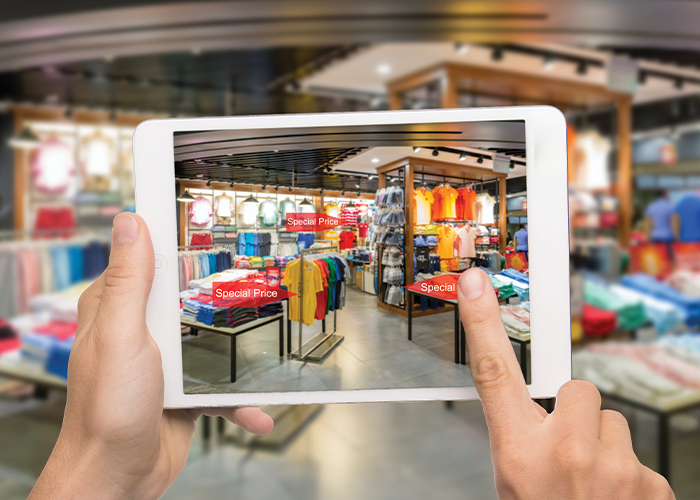Ahlian Jian Insights
Exploring the latest trends and news in various fields.
Seeing is Believing: How Augmented Reality is Blurring the Lines of Reality
Discover how augmented reality is transforming our perception of reality and blurring the lines between what’s real and what’s not!
Exploring the Intersection of Reality and Virtuality: The Impact of Augmented Reality
The emergence of Augmented Reality (AR) has significantly transformed our perception of the world around us. By overlaying digital information onto our physical environment, AR creates a seamless blend of reality and virtuality, allowing users to interact with their surroundings in innovative ways. From enhancing gaming experiences to revolutionizing industries such as healthcare and education, the applications of AR are vast and ever-growing. For instance, in medical training, AR provides doctors with real-time data and holographic models to aid in procedures, thereby improving accuracy and efficiency.
As we delve deeper into this digital frontier, the impact of Augmented Reality extends beyond mere entertainment and utility. It challenges our understanding of personal and communal spaces, offering new avenues for social interaction and engagement. By facilitating shared experiences—such as virtual meet-ups or collaborative projects in augmented environments—AR fosters a sense of connection among users, even when they are physically apart. This blurring of boundaries between the tangible and the digital will likely define future innovations, creating a landscape where the intersection of reality and virtuality continually evolves.

How Augmented Reality is Transforming Industries: From Gaming to Healthcare
Augmented Reality (AR) is reshaping multiple industries, bringing immersive experiences that enhance both productivity and engagement. In the gaming sector, AR has taken traditional gameplay to the next level by integrating digital elements into the real world. Popular titles like Pokémon GO have demonstrated its potential, allowing players to explore their environments while interacting with virtual creatures. This innovative approach is not only captivating audiences but also driving social interaction and physical activity, which marks a significant shift in how games are consumed.
Beyond entertainment, augmented reality is making substantial strides in healthcare. Medical professionals are utilizing AR for advanced training simulations, enabling surgeons to practice procedures in a risk-free environment. Additionally, AR applications assist in real-time diagnostics, overlaying crucial data directly onto a patient’s body during examinations. This transformative technology is not only improving the accuracy of medical practices but is also enhancing patient outcomes, showcasing AR's versatility and importance across varied sectors.
Is Augmented Reality Just a Fad? Understanding Its Long-Term Potential
As technology continues to evolve, the question arises: is Augmented Reality (AR) just a fad, or does it possess genuine long-term potential? Initially, the hype surrounding AR seemed fleeting, with many wondering if it would follow the path of other trends that fizzled out quickly. However, the continuous advancements in hardware and software, coupled with increasing consumer interest, suggest that AR is establishing itself as a transformative technology. Industries such as gaming, healthcare, education, and retail are already integrating AR to enhance user experiences, proving that its applications extend far beyond mere novelty.
Understanding the long-term potential of AR involves recognizing its ability to blend digital and physical worlds seamlessly. For instance, in the retail industry, brands are utilizing AR to allow customers to visualize products in their own environment before making a purchase. Likewise, in education, AR enhances interactive learning by bringing complex concepts to life through immersive experiences. Thus, as the infrastructure supporting AR continues to improve and the technology becomes more accessible, it is becoming increasingly clear that augmented reality has the potential to revolutionize how we engage with information and our surroundings, solidifying its place in the future rather than fading away.